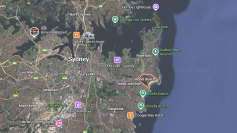Some patients in the second COVID-19 wave are staying longer in the hospital and requiring more specialized care than those in the initial Omicron outbreak, according to infectious disease specialists.
As officials battle to keep up with the extremely contagious Omicron strains, one of Australia's largest death tolls from the new coronavirus was recorded on Thursday.
Some doctors on the front lines of the most recent coronavirus outbreak in Australia have noted early indications that the BA.5 subvariant may be boosting illness severity, and new study suggests it may be more successful at infecting lung cells.
The BA.4/5 variations are adept at circumventing the immunological protection afforded by vaccination or prior infection and have caused a global increase in new infections.
Dr. Marion Kainer, director of infectious diseases at Melbourne's Western Health, stated that as the number of patients increases, more elderly individuals in the city's west are exhibiting acute respiratory symptoms and requiring more medical treatment than patients in the previous Omicron wave.
Deaths in Australia on Thursday and Wednesday were at their highest daily total since this year's initial Omicron wave, with 89 deaths each. On Thursday, slightly more than 55,600 new cases were reported, the largest number since May 18.
Kainer stated that Western Health was admitting more people in their 30s, 40s, and 50s who had not had their third vaccine dosage and were gravely ill.
"What we've observed is that patients are sicker and staying longer than during the previous Omicron wave," she added.
Prime Minister Anthony Albanese stated that despite pleas from certain physicians, state and federal health officials have not advocated making masks essential in indoor venues.
Australia escaped the high casualty numbers reported in other nations during the first waves of the pandemic due in large part to high public compliance with strict social distancing regulations.
Albanese has rejected pressure from certain health experts to impose mask regulations, as there is little public support for a resort to such measures to combat the most recent virus outbreak.
The most recent Omicron wave is bringing the number of COVID-19 patients in Australian hospitals close to the January peak. Approximately 5,350 individuals are hospitalized, and a number of states are experiencing record admissions.
Only approximately 71 percent of the eligible population has received booster injections, despite the fact that authorities have urged businesses to allow employees to work from home and advised individuals to obtain the vaccinations immediately. Approximately 95% of adults have received two doses.






